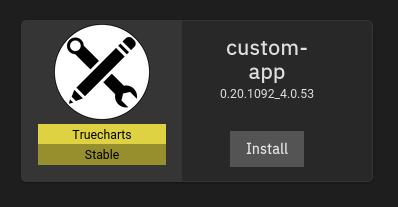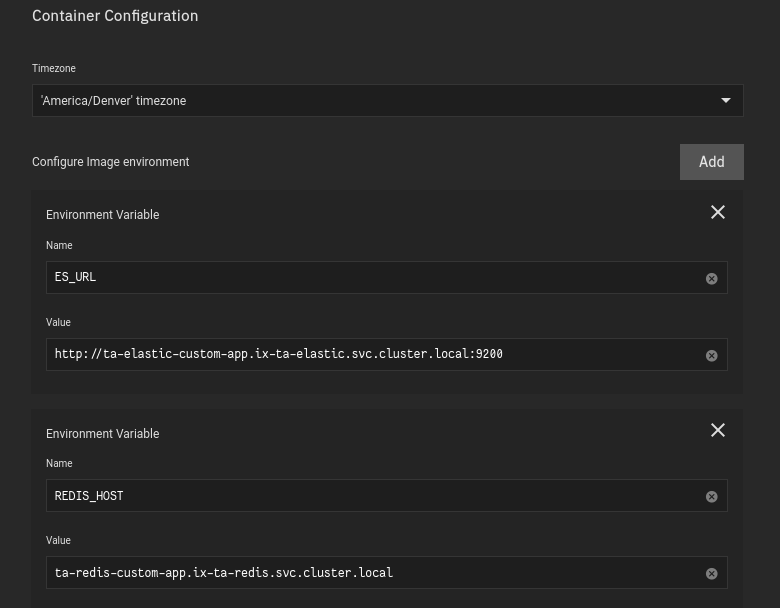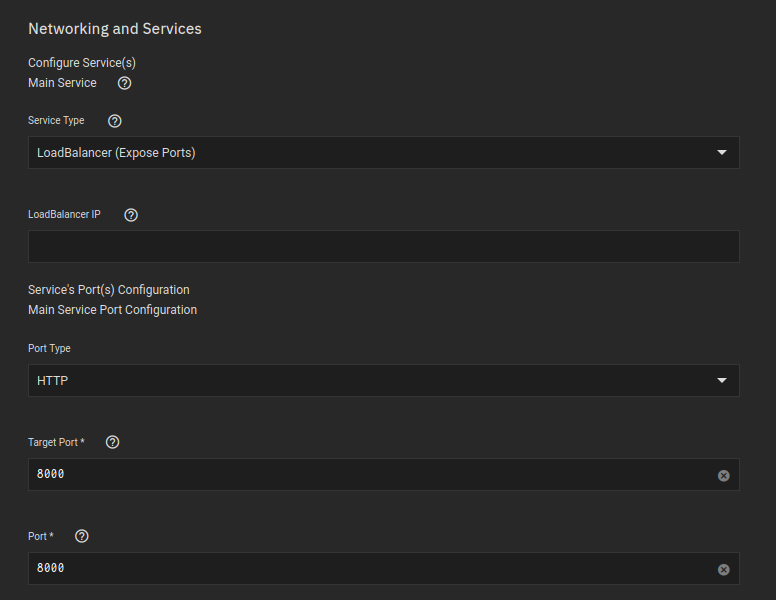TubeArchivist Installation
For this application I used the Custom-App provided by TrueCharts.
- Available under the
stabletrain

Container¶
Container Repository
bbilly1/tubearchivist
latest

Environment Variables¶
Name
ES_URL
http://ta-elastic-custom-app.ix-ta-elastic.svc.cluster.local:9200
Name
REDIS_HOST
ta-redis-custom-app.ix-ta-redis.svc.cluster.local

Name
TA_USERNAME
USERNAME
Name
TA_PASSWORD
PASSWORD
Name
ELASTIC_PASSWORD
verysecret

Name
TA_HOST
youtube.myserver.com
If you are NOT using a reverse proxy, put your IP address here instead

Networking¶
Target Port
8000
8000

You can change LoadBalancer to CluserIP if you only intend to use this through ingress (a domain name), if not, or you don't know, leave it as LoadBalancer
Storage¶
- Used the same dataset we created earlier
- This is where your data, or videos are going to be actually stored
- You could instead use PVC if you would like to, but since my applications are not on the same pool as my storage tank, it would be a bad idea for me personally
Ensure the mountpath is:
/youtube
TubeArchivist specifically looks to that mount point, its required

- Used pvc just for the cache, its likely to just be small files the user will never have to interact with anyway
Ensure the mountpath is:
/cache
You of course can change
Size Quotum of Storageto something lower.
Security¶
-
Select Show Advanced Security Settings
-
UN-Select runASNonRoot
-
Change runAsUser to
0 -
Change runAsGroup to
0
Running the application without user:group
0orroot, resulted in a Django import error.
